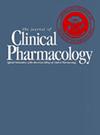The seduction of biomarkers in the practice of medicine and the tyranny of power in the drug approval process: lessons from niacin.
IF 2.4
4区 医学
Q3 PHARMACOLOGY & PHARMACY
引用次数: 3
Abstract
T practice of clinical medicine continues to evolve. The proper use of technology has undoubtedly improved the longevity and quality of life of patients throughout the world. However, overreliance on and overinterpretation of selected surrogates (biomarkers) for disease improvement, subsequent to therapeutic interventions, threaten to supplant a focus on complete history taking and thorough physical examination of the patient. This more comprehensive approach, although ideal, may not be operational to an extent sufficient to relegate the interpretation of biomarkers to a supportive role as one of many factors guiding optimization of therapeutic interventions. Several recent developments have likely contributed to this trend. Time pressure on all physicians, but especially those in primary care, may abrogate the due diligence necessary to adequately gain a complete picture of illness. Although overall physicianpatient communication seems not to be negatively impacted by the availability of computers in examination rooms, the instant availability of laboratory tests at the time of the patient visit may seduce both the patient and the physician to emphasize communications on questions such as “Doc, what do my numbers look like today?” to the exclusion of other pertinent issues. Lastly, the intensity of direct-to-consumer advertising, complemented by pharmaceutical detailing techniques, reinforces a natural human tendency to focus on numerical parameters that can be most directly impacted by therapeutic interventions. The clinical trial NCT00120289, a study to determine whether adding niacin to statin therapy would reduce the incidence of vascular events, is the most recent example that further informs the proper role regarding the use of biomarkers in clinical medicine. This study was stopped 18 months early because there was no possibility that adding extended-release niacin to either the simvastatin or atorvastatin treatment arms would achieve the desired clinical endpoints of reducing cardiovascular disease and because it unexpectedly documented a small unexplained increase in ischemic strokes in the high-dose niacin group, despite achieving marked improvements in serum triglycerides and high-density lipoprotein (HDL). Niacin’s lack of impact on clinically relevant cardiovascular outcomes in this clinical trial, despite improvement in both surrogate biomarkers, is consistent with and extends observations from previous reports of the lack of benefit on cardiovascular outcomes in patients with type 2 diabetes when fenofibrate is added to simvastatin, despite a significant reduction in triglycerides. Careful interpretation of these developments may clarify the singular importance of lowering low-density lipoprotein (LDL) cholesterol, according to our current understanding of the mechanism of the lipogenesis-cellular signaling continuum as it relates to the development of drug targets. Statin drugs are unquestionably effective in improving cardiovascular outcomes, largely due to their impact on LDL. Similarly, clinical trials with niacin, fibrates, and resins also have data supporting生物标记物在医学实践中的诱惑和药物审批过程中的权力暴政:烟酸的教训。
本文章由计算机程序翻译,如有差异,请以英文原文为准。
求助全文
约1分钟内获得全文
求助全文
来源期刊
CiteScore
5.10
自引率
3.40%
发文量
176
审稿时长
2 months
期刊介绍:
The Journal of Clinical Pharmacology (JCP) is a Human Pharmacology journal designed to provide physicians, pharmacists, research scientists, regulatory scientists, drug developers and academic colleagues a forum to present research in all aspects of Clinical Pharmacology. This includes original research in pharmacokinetics, pharmacogenetics/pharmacogenomics, pharmacometrics, physiologic based pharmacokinetic modeling, drug interactions, therapeutic drug monitoring, regulatory sciences (including unique methods of data analysis), special population studies, drug development, pharmacovigilance, womens’ health, pediatric pharmacology, and pharmacodynamics. Additionally, JCP publishes review articles, commentaries and educational manuscripts. The Journal also serves as an instrument to disseminate Public Policy statements from the American College of Clinical Pharmacology.

 求助内容:
求助内容: 应助结果提醒方式:
应助结果提醒方式:


